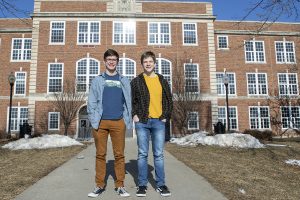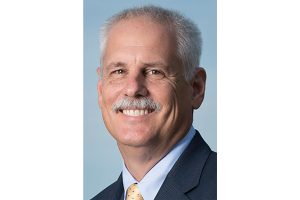UI doctors discover new genetic mutation that causes fatal heart arrhythmias
After several Mennonite children suffered fatal cardiac arrests and there were no answers to why, a team of UI doctors set out to discover an unknown genetic mutation that caused these deaths.
University of Iowa Hospitals and Clinics is seen on Sept. 17, 2018.
February 20, 2020
After several children died from sudden cardiac arrests, a team of doctors discovered a genetic mutation to be the cause of their fatal heart arrhythmias — a disorder of the movement of the heart that disturbs its typical contracting rhythm.
Ian Law, pediatric cardiologist at the University of Iowa Hospitals and Clinics, said a Mennonite family moved to Iowa in 2013 just before one of the children died suddenly of cardiac arrests.
Doctors ran further tests and found other Mennonite children to be at a similar risk for heart problems, Law said, and had been so for years. Ultimately, the cardiac arrests were the result of genetically inherited heart arrhythmias.
“We determined that the children had inherited gene mutations and the mother and father both had one good copy and one bad copy, causing their children to have different combinations of the gene,” Law said.
One bad copy plus one good copy would give a child more of a predisposition to the heart defects but not make them at risk, two bad copies would mean they are indeed at risk of the fatal mutation, while two good copies would mean they bear no trace of the gene, Law said.
As of right now, Law said, there is no cure for the recently discovered genetic mutation, but physicians can prophylactically place pacemaking devices or beta blockers in children who test positive for the gene before they have an episode.
In a letter written to Law at UIHC, the mother of the children affected said that the family was thankful for the doctors putting in implantable cardioverter defibrillators the children, and understands that they need to pay more attention to how the kids take medications daily and watch their activity when sick because most of the cardiac episodes occurred when they were feeling “under the weather.”
“[We are] glad to know if we can do a blood test to find out if the children and grandchildren will be affected … I still have a hard time fully believing we can totally rely on these tests,” the letter said.
The new genetic mutation is unnamed at the moment, because it had not been discovered or identified before now, Law said. Moving forward, precaution against it can now be taken.
“Knowledge is power, so ideally what will happen is that we genetically test those who want to get married and counsel them, whether or not they have any trace of the mutated gene,” Law said.
RELATED: Labs from UI, Texas share credit for simultaneous genetic discovery
Hannah Bombei, a genetic counselor in pediatric cardiology at the Stead Family Children’s Hospital, defined genetic arrhythmias as an abnormal heart rhythm which can stem from a variety of causes.
“You can think about this like a factory assembly line. The genetic code is the blueprint to make certain products such as calcium, potassium, or sodium channels in the heart muscle cells,” Bombei said. “If the blueprints aren’t correct due to a genetic mutation, the resulting products won’t be produced and/or function properly.”
In the future, Bombei said doctors hope to move toward more personalized medicine. This means they would determine the most effective treatment based on the particular underlying genetic cause of an anomaly in a patient’s heart.
UI pediatric cardiology Professor Emerita Dianne Atkins said there are multiple mutations similar to this one which has been found only in Mennonite families, and that — by the doctors discovered it — they were anxious and then moved on to figure out why it happened.
“Now that we have found this specific mutation it is very likely that we will continue to find it other communities and families,” Atkins said.
RELATED: UI researchers find potential link between DNA changes and suicidal behavior
It’s hard to pinpoint how many people are affected by arrhythmias, Atkins said, because the condition presents very differently in different people and doctors only know about those who show symptoms. Some are extremely rare, she said, and others are more common.
This mutation differs from others because doctors can discover who is at risk and who isn’t, Atkins added, so treatment can begin before a fatal event.
Atkins said this discovery was important as a collaboration because doctors agreed that they were all helping patients with unclearly defined abnormalities and had to work together to find answers.
Law said they had to work to define the mutation itself, as well as keep track of who carried and showed symptoms of it.
“Persistence, curiosity and teamwork is key,” Law said. “If we didn’t have a community working together, these people and those in similar positions, would have continued to die.”





